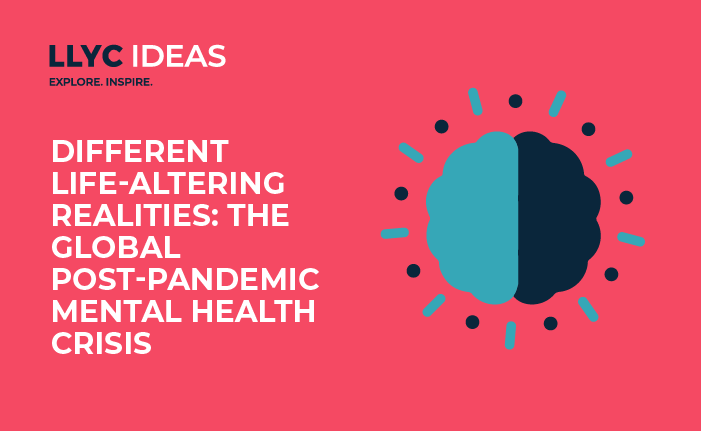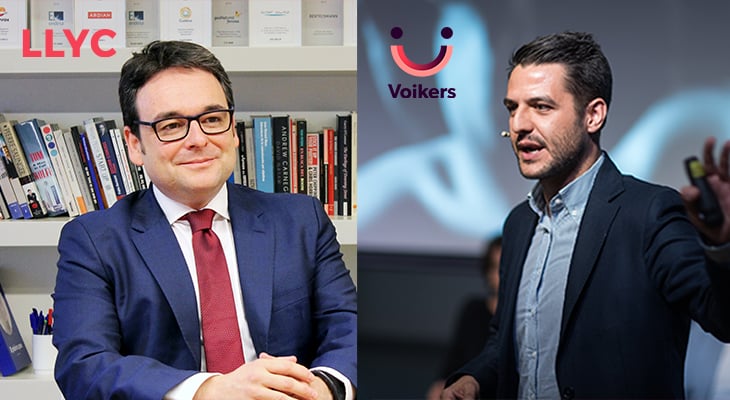-
TrendsPublications and Reports
The pandemic has intensified the deterioration of the mental health of the population, especially among adolescents. The triggers are multiple. To the increase in polarization and lack of sleep hours have been added the negative effects of social networks on self-esteem or the paradox that hyperconnectivity has caused the feeling of loneliness and isolation of human beings to increase. This cocktail coincides with a shortage of professionals and little knowledge of available treatments. Faced with this scenario, what can we do? The increase in disorders requires a better preparation of health systems to address this priority problem, new methods focused on treating depression, schizophrenia or anxiety but also the design of a strategy to address this challenge from a communication perspective.
The report ‘Different life-altering realities: the global post-pandemic mental health crisis’, prepared by LLYC’s Healthcare team, provides clues on how communication strategies should be implemented by companies and institutions to address mental health disorders. The key ingredients are empathy and the use of Artificial Intelligence, effective communication to connect and overcome stigma and get the affected person to seek help.
– Understanding in order to help: empathy and data. Understanding the reality faced by the people affected and sizing up the problem will help to understand the situation and drive the search for recommendations from health professionals and institutions. Empathy and knowledge are necessary. In this context, it is more important than ever to analyze the conversation, listen to what those affected are saying and try to assimilate their perspective and experience of the reality. In addition to applying Big Data and Artificial Intelligence solutions to analyze the social conversation and discover the concerns of those suffering from this disease, it is important to go beyond social networks and listen to people through interviews and personal interactions to understand their perspective. This allows you to gather relevant insights to create a narrative that connects, create personalized messages and deliver them through the right channels.
– De-stigmatization: communication that leads the way to acceptance. Mental health is a topic that needs to be addressed frequently and transparently to raise awareness. It is essential that campaigns are authentic and convey a message that connects with the needs of audiences.
The global movement led by influencers and celebrities seeking to speak openly about mental health on their social networks in the wake of cases such as gymnast Simon Biles, who withdrew from several events at the Tokyo Olympics, or Justin Bieber, who canceled all his concerts, is an encouraging change that promotes vulnerability, the need to acknowledge the problem and seek help. What used to be a challenge for companies, today is a great opportunity to connect with their audiences.
– Effective multichannel campaigns to build trust and encourage people to seek help. Several studies show that 60% of people who need help do not ask for it. That is why it is essential to develop bidirectional and multichannel communication strategies with differentiated messages by audience and reliable information to ensure that all those affected have access to professional care and medicines that have developed therapeutic value.
Communication strategies should include education, awareness and motivation to action, towards seeking professional help. But also through advocacy projects that build trust between society, the medical community and healthcare institutions.
“Mental health is a potentially growing problem that needs to be addressed. This requires a combination of approaches that starts from recognition of the problem, moves from words to action and involves society, patients, physicians and healthcare institutions. It is essential to use advanced technologies such as Big Data and Artificial Intelligence to design an effective communication strategy and ensure that people receive the care and treatment they require,” says Javier Marín, Senior Director of Healthcare Americas at LLYC
Read the full study by clicking here.



